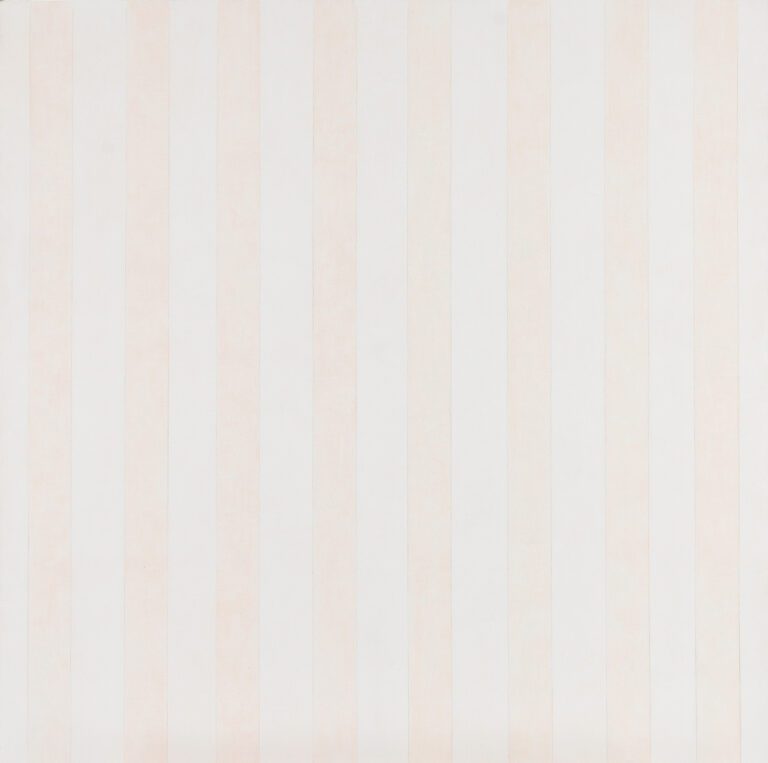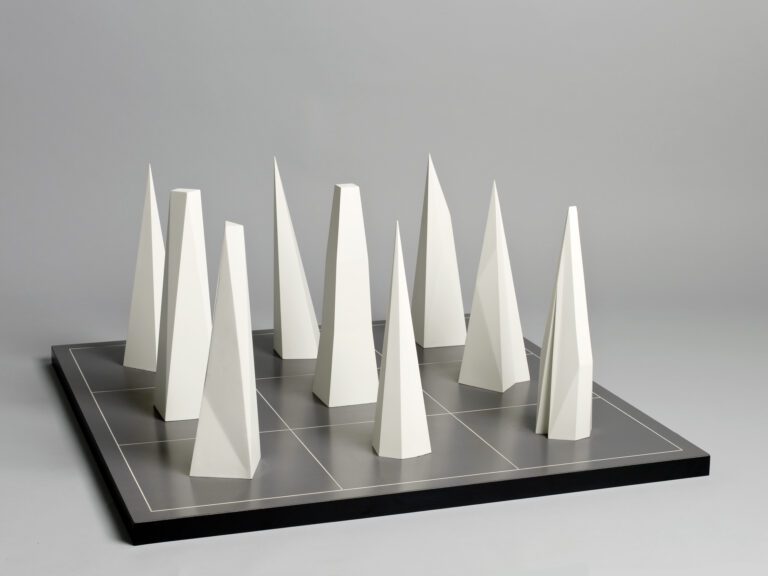While often considered a Minimalist, Agnes Martin saw herself as an Abstract Expressionist. Beginning in the early 1960s, she was known for her radically abstract paintings and drawings, characterized by balance, unity, a monochromatic palette, and the use of grid patterns. This last element was perhaps inspired, at least in part, by the artist’s observation of the natural world. And yet, although she chose titles that imply a close connection to nature, she claimed that her work was “anti-nature.”
Martin’s intention in her paintings was to produce the same effect brought about by listening to music or staring out at the ocean or into a vast field. The eye first perceives the language of the picture and the rules according to which it was constructed. Then it is free to examine the details, such as the pencil lines that seem integral to the painted background and yet were clearly drawn on top of it, by hand, with slight overlaps and miniscule fluctuations that reveal human intervention. Martin strove to attain a language of pure form and unity, totally unworldly, eliminating everything superfluous and inessential. In this way, she sought to create a feeling of peace, harmony, and order. Each of her works, defined by its own unique pattern of interwoven lines, exhibits a subtle yet undeniable complexity.
Suzanne Landau
















